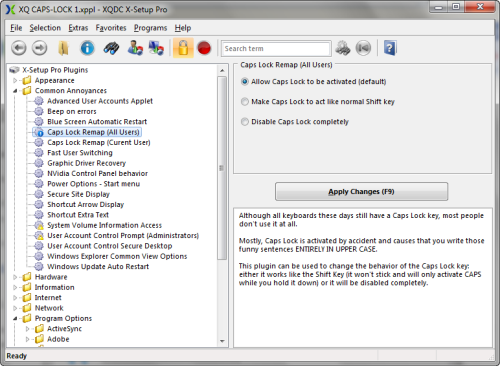X-Setup Pro is a tweaking application for Windows that allows you to easily change over 2,000 settings that are normally hidden inside configuration files and registry seetings. Beside these hidden settings, it also allows you to easily change different settings in a consistent way, which are normally scattered across Windows.
X-Setup Pro is completely plug-in based. Every tweak, every functionality is provided by a plug-in. Because they are very small in size (usually 2 to 4 kb) they load fast and easy to upgrade. X-Setup Pro won’t upgrade any more though because it has been discontinued, which is why it’s made free. But plug-ins can be coded by independent developers keeping the software alive and up to date if their is enough interest from the community.

Each time you make a change with X-Setup Pro, X-Setup Pro saves the previous setting to a file. In case something does not work as you expect it, you can revert to the previous settings with just a click.
One feature of X-Setup Pro that Network Administrators may find useful is the Record Mode. If this mode is activated, X-Setup Pro will record most of the system changes you make into a REG file. This file can then be transferred to a different machine and added to the registry by simply double-clicking it, a great time-saver if you want to make the same changes to several machines.
Another very handy feature is the “Load user registry” option. Sometime an administrator might want to lock other users from certain functions without affecting other users of the computer. Simply click on “Load user registry” from within the “Classic” interface and a window will appear, showing you all users that exist on your computer. Simply select the user you wish to change and click OK.
X-Setup Pro can even load the entire registry of a different computer. This is very handy if you want to fix a system you currently can’t access because Windows crashes on that computer. Either plug the hard disk of the other computer on your computer so you can access it, or use X-Setup Pro together with BartPE by creating a bootable CD.
X-Setup Pro runs on any Windows version from Windows 95 to Windows 7. On the program’s home page you will find links to download the last active version of the software along with a serial key that will unlock the program.
[via Gizmo’s Freeware]

Comments
Post a Comment